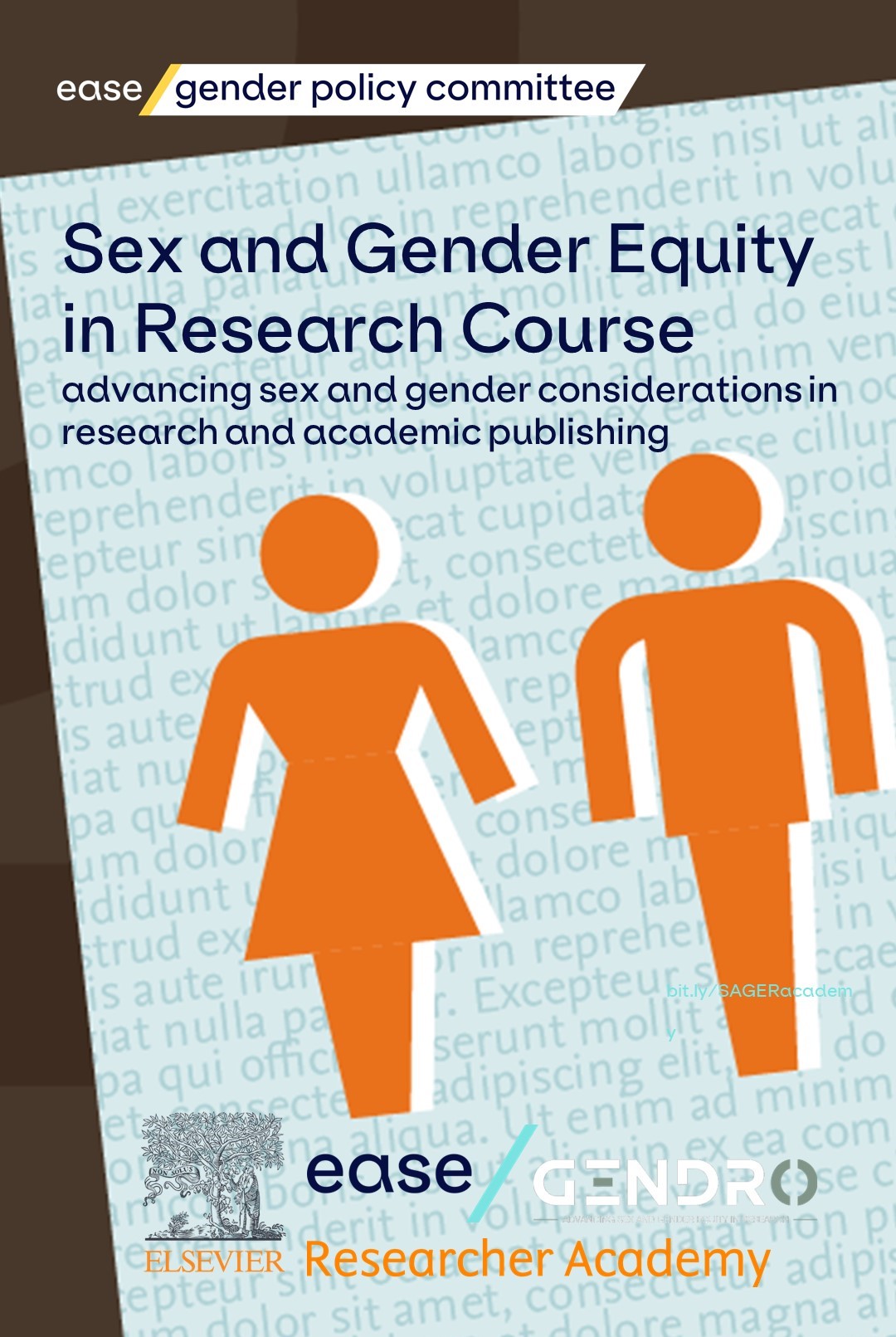
SAGER guidelines
Unlocking the Power of Inclusive Research: A Brief History of the SAGER Guidelines
The Sex and Gender Equity in Research (SAGER) guidelines represent a pivotal shift in how we approach research design, implementation, and communication.
Following her election in the council of the European Association of Science Editors (EASE), Dr. Shirin Heidari established the EASE Gender Policy Committee (GPC) in 2012 and embarked on a collaborative journey toward addressing the oversight of sex and gender differences in scientific endeavors.
The EASE GPC, co-chaired by Dr. Shirin Heidari and Dr Thomas Babor, benefitting from the membership of several dedicated experts, editors, science communicators and researcher, embarked on a mission to promote integration of sex and gender in scientific publishing, recognizing the need for consistent reporting of sex and gender-specific data. Following a consultative process, this commitment materialized with the launch of the SAGER guidelines in 2016.
The ‘Sex and Gender Equity in Research: rationale for the SAGER guidelines and recommended use’ laid the groundwork for an international set of guidelines that encourage a systematic approach to reporting sex and gender across disciplines, offering a comprehensive tool designed for researchers, authors, and editors to seamlessly integrate sex and gender dimensions into research reporting.
Since their inception, the SAGER guidelines have been adopted by all leading academic publishers such as Elsevier, Nature Publishing, Cell Press, other prominent academic journals, including BMJ and The Lancet, and an increasing number of society and independent journals. They have also gained widespread recognition and growing adoption by organizations such as COPE, The Institute of Gender and Health (IGH) of Canadian Institutes of Health Research (CIHR-IGH), FIND, and more recently, the World Health Organization.
In 2023, the EASE Gender Policy Committee concluded its mission. The ongoing promotion and expansion of this critical work now continue under the auspices of GENDRO, with continued collaboration with EASE and other partners.
The SAGER Guidelines, now widely recognized, are included in the EQUATOR website and listed in the Research Reporting Guidelines of the US National Library of Medicine.
SAGER guidelines - Some statistics
Accesses
Citations
Online attention
- This article is in the 99th percentile ranked 1,267th of the 314,166 tracked articles of a similar age in all journals
- This article is in the 83rd percentile ranked 1st of the 6 tracked articles of a similar age in Research Integrity and Peer Review
SAGER Guidelines Course: A nine-module online course on Reasercher Academy

The SAGER Guidelines are available in seven languages
More information:
Check list: https://doi.org/10.3897/ese.2022.e86910
Link to researcher academy: https://researcheracademy.elsevier.com/research-preparation/sex-gender-equity-research-sager-guidelines
TEDx about SAGER: https://www.youtube.com/watch?v=sS4_dYHrX4I
Achivements: https://ease.org.uk/communities/gender-policy-committee/achievements/
